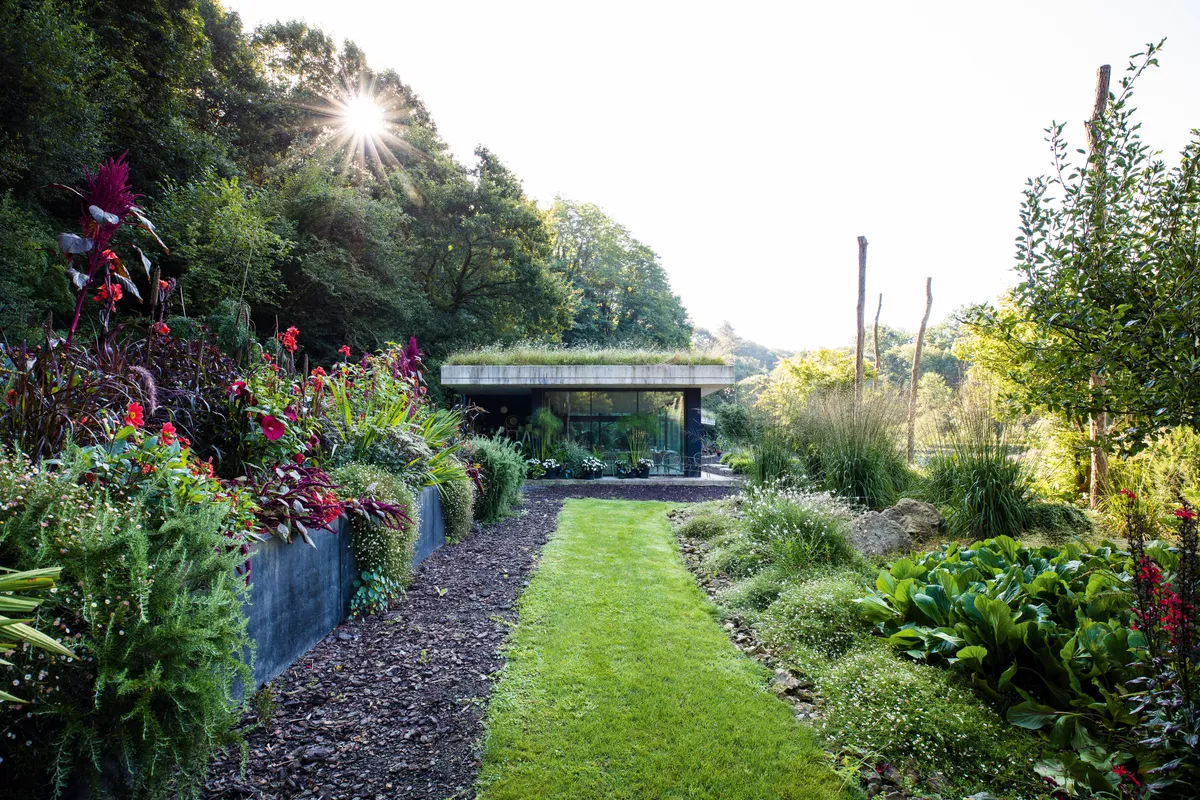A garden that is a challenge to get to creates a sense of anticipation and heightened awareness at the final arrival, and negotiating the narrow lanes of the wooded valleys south of San Sebastián in the Spanish Basque Country to reach this particular garden certainly generates a sense of intrigue. There is so much that is familiar – the oaks and the surrounding hills mean this garden could easily be in Wales – and an initial overview of the plant selection is reminiscent of many a British garden. But, here it is as if someone has taken a range of familiar plants and arranged them in a way that is completely new. It is quite extraordinarily refreshing, and, one of the most stimulating gardens I have ever set foot in.
Welcome to Lur, which means 'earth' in Basque. Lur is not just a garden, it is also the landscape architecture practice of Iñigo Segurola Arregui and his partner Juan Iriarte Aguirrezabal, who have been working together making gardens in the Basque Country for many years while using the garden around their studio as a test bed for many of their ideas. “We wanted to use it for research,” says Iñigo, and indeed there is something of a feeling of many things being tried out: a green roof, a meadow, colour combinations. But there is also a powerful energy and highly inventive creativity.
Lur: the garden in brief
What Garden for landscape architecture practice Lur, featuring several imaginatively themed garden areas. Where Basque Country, northeast Spain. Size Two hectares. Soil Variable alluvial soil, mostly acidic. Climate Maritime temperate with high summer temperatures. Hardiness zone USDA 9.

Foliage and flower combine to striking effect in this intimate, pink-themed garden centred around a large, black, concrete water feature – another example of the egg motif. In the foreground the purple leaves of Ricinus communis sit alongside the pink flowers of Hibiscus moscheutos ‘Luna Red’ and Impatiens hawkeri. Facing these the brown seedheads of Astilbe chinensis var. taquetii would have been searingly magenta flowers a month ago.
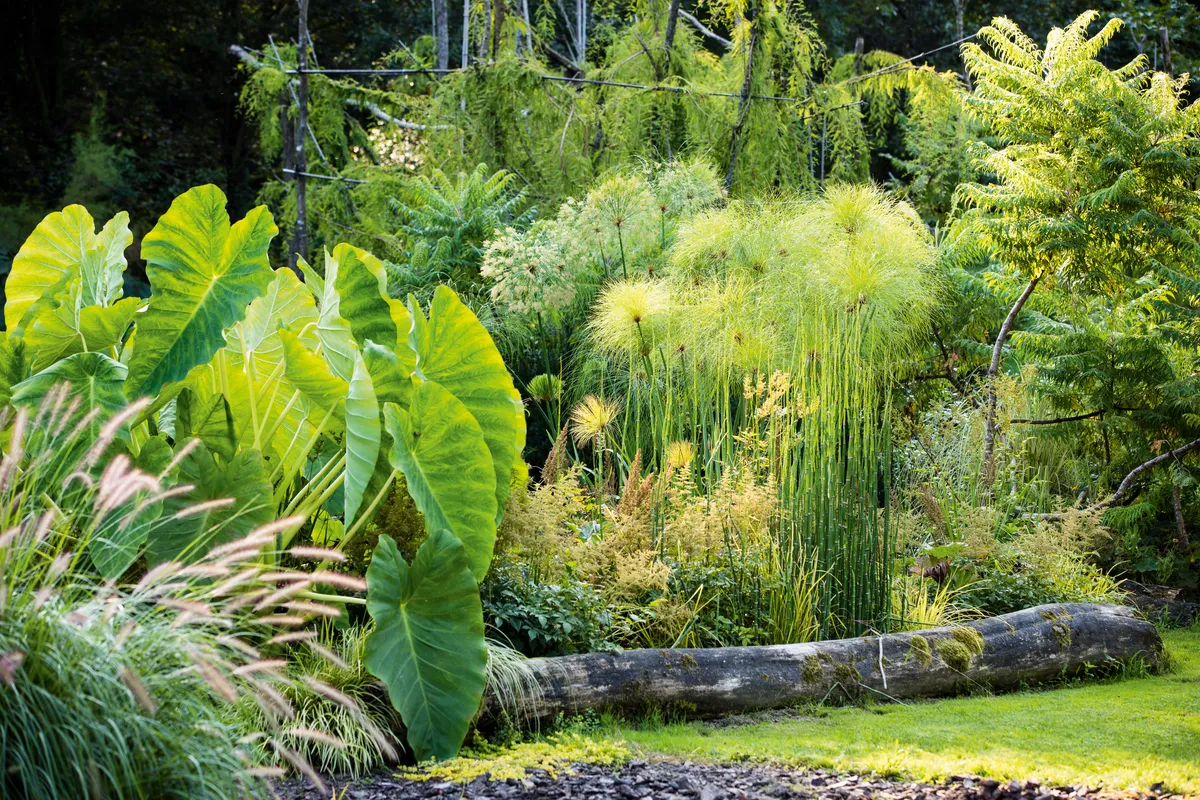
In the Humedales, or wetlands area, exotic-looking waterside plants dominate: the enormous heart-shaped leaves of Alocasia macrorrhiza contrast with the fluffy heads of Cyperus papyrus. Behind is Rhus typhina ‘Dissecta’, a small tree easily kept within limits through hard pruning or coppicing, and behind that the rather outlandish forms of Taxodium distichum ‘Cascade Falls’, a weeping form of the deciduous conifer.
There is a powerful energy and highly inventive creativity. All enclosed in the embrace of a valley, the sides clothed in a mixture of oak woodland and pasture
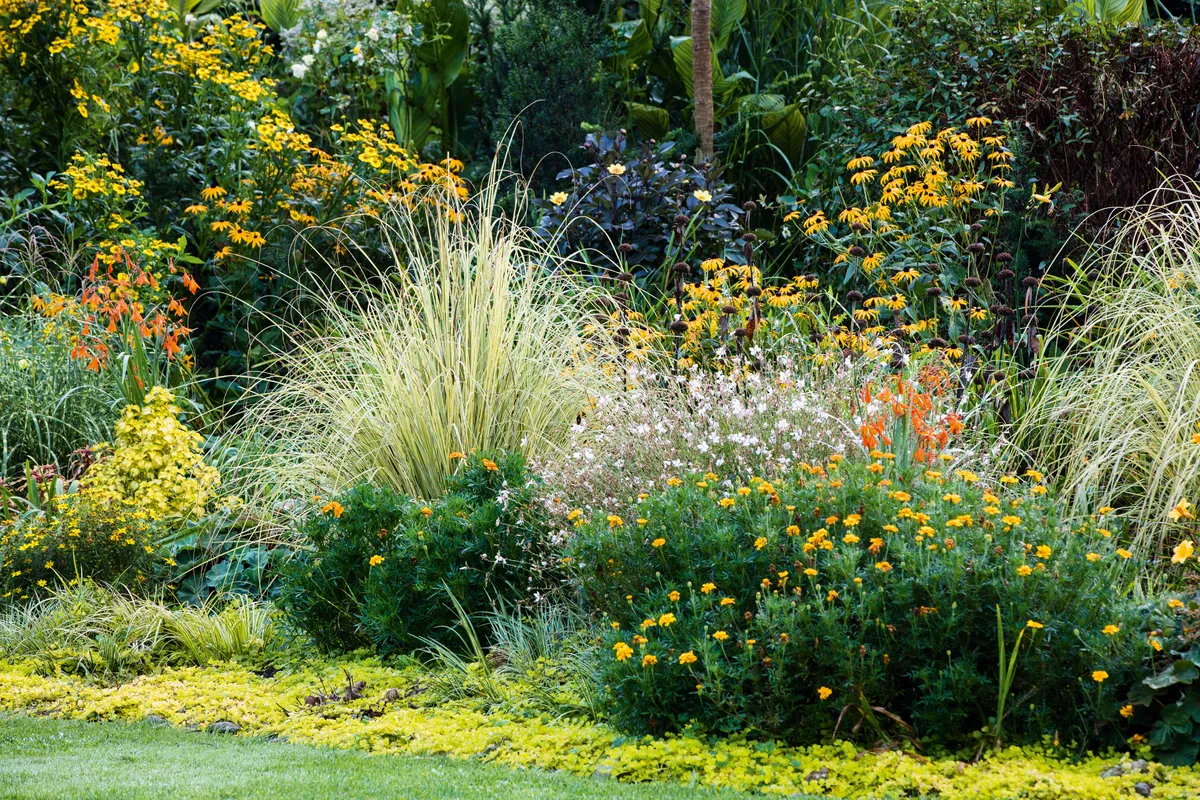
The golden-variegated Cortaderia selloana ‘Aureolineata’ makes a useful rhythm plant in the Mirror Garden. Rudbeckia laciniata ‘Juligold’ dominates the rear of the border here, and will do so for much of the late summer period with Tagetes patula forming bushy plants in front. The yellow theme is continued with the foliage of Coleus scutellarioides ‘Golden Bedder’ and at the very front the creeping Lysimachia nummularia ‘Aurea’.
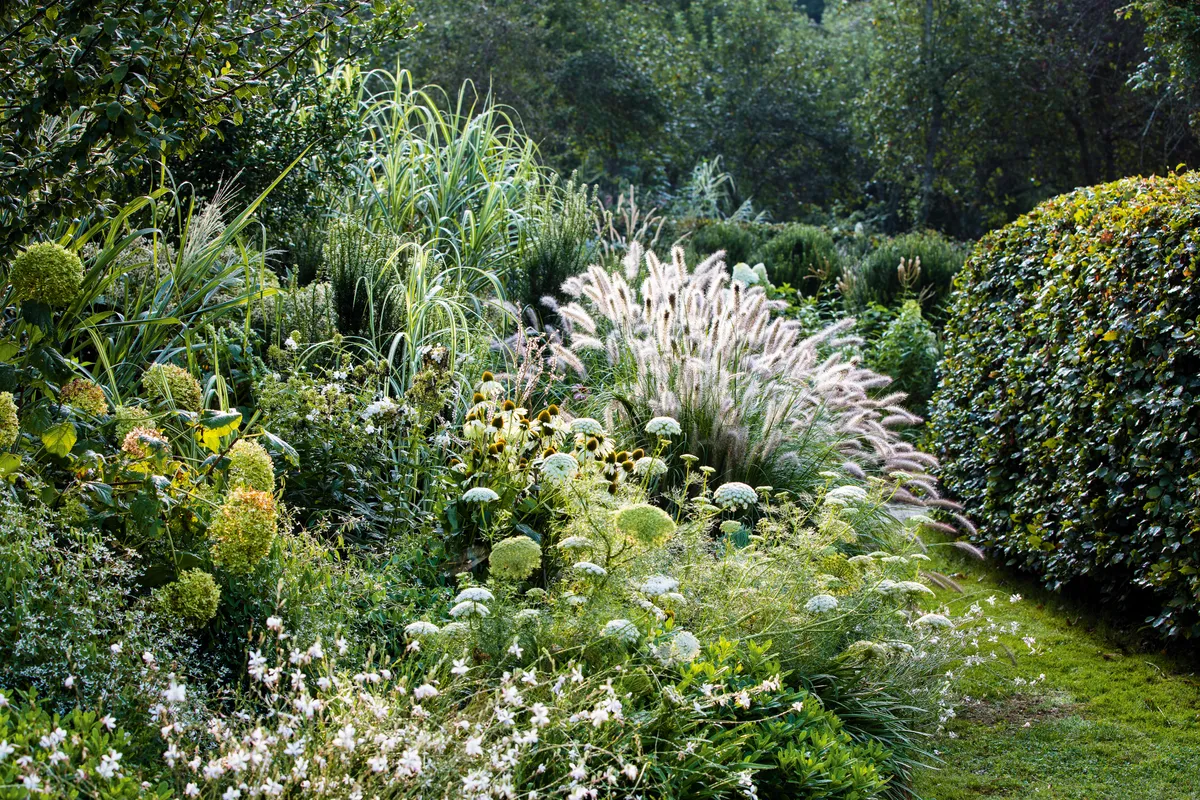
In one of two White Gardens, planting takes centre stage with grass Pennisetum alopecuroides forming a prominent focal point surrounded by the umbel seedheads of Ammi visnaga and Echinacea purpurea ‘Alba’ in front, and the tall grass Miscanthus sinensis var. condensatus ‘Cabaret’ at the rear. In the foreground, Gaura lindheimeri is usefully long-flowering and is also a remarkably heat-tolerant plant.

The Pradera, or meadow, is a large egg-shaped lawn dotted with smaller eggs of long grass and wildflowers. In the background trunks of Robinia pseudoacacia – placed here for their sculptural impact – are used to dramatic effect, while in the foreground Pennisetum alopecuroides creates a soft edge.
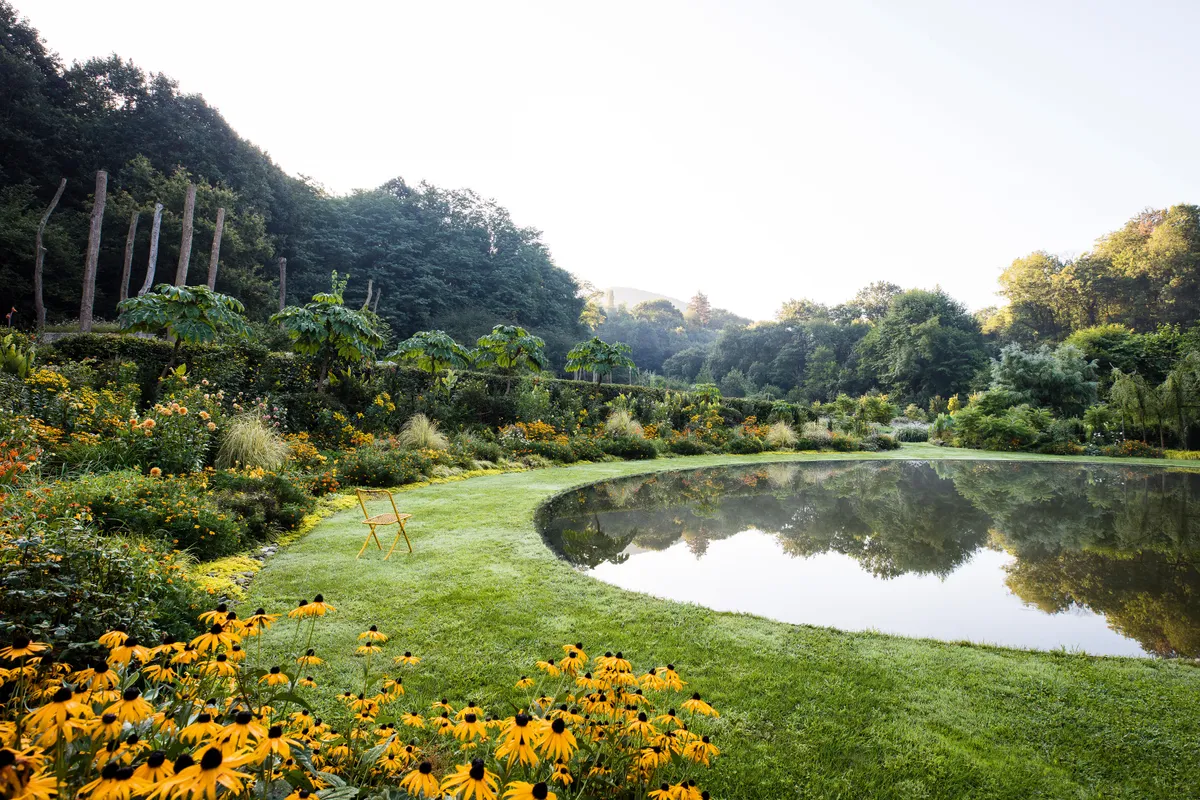
The yellow border has a rhythm set by the Tetrapanax papyrifer trees. The planting includes Dahlia ‘Glorie van Noordwijk’, Tagetes patula, Rudbeckia maxima, and an edging that includes Acorus calamus ‘Variegatus’.
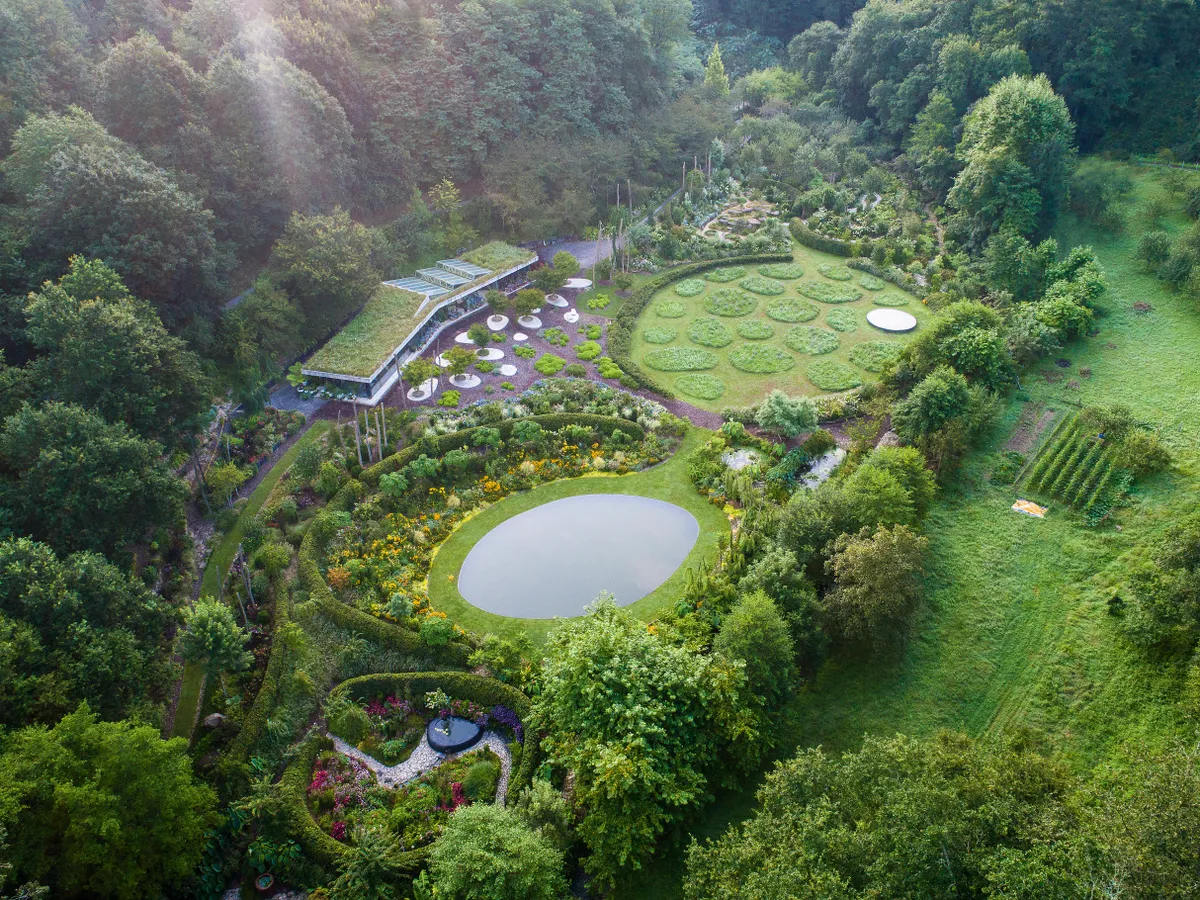
When seen from above, the egg shapes that dominate the garden at Lur come to the fore. Sandwiched between two areas of smaller, colour- or foliage-themed gardens are two large, ovoid gardens. At the top, is the area known as the Pradera, or meadow, an area of mown grass with egg-shaped patches of grass and wildflowers allowed to grow taller. Below this is the Mirror Garden with its egg-shaped pool and yellow colour theme. To the left is the practice’s studio with its grass roof and a series of egg-shaped cement planters filled with Pittosporum tobira ‘Nanum’.
Find out more about Iñigo and Juan’s work at lurpaisajistak.com
